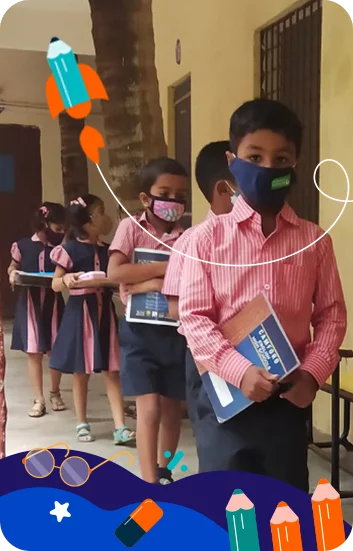![]()
Teaching Learning Materials (TLM) and Teaching Aids are both essential in the educational process, but they serve different purposes. Understanding these differences can help educators use them more effectively in the classroom.
Teaching Learning Materials (TLM) Explained
Teaching Learning Materials (TLM) encompass a broad range of resources used to support both teaching and learning processes. These materials include textbooks, workbooks, visual aids, digital content, and tangible objects that cater to that facilitate deeper understanding, engagement, and active participation in the learning process.
The main goal of TLM is to enhance the educational experience by providing diverse tools that help students understand, retain, and apply knowledge. For instance, textbooks offer a structured way to present information, while online learning platforms and educational videos provide interactive content that can engage students more deeply.
Hands-on kits and models allow for experiential learning, making abstract concepts more tangible and easier to grasp. TLM is utilised across various stages of learning, from introducing new topics to revising and applying knowledge in practical scenarios.
Teaching Aids
Teaching Aids are a subset of TLM, specifically focused on tools that help teachers explain concepts or ideas more effectively in the classroom. These aids are particularly valuable for making lessons more interactive and understandable.
While TLM covers a wide spectrum, Teaching Aids are used mainly during the delivery of lessons to clarify or illustrate specific points. They assist teachers in conveying information in a way that captures students’ attention and makes learning more engaging.
For example, charts can summarise information visually, flashcards can be used for quick reviews, models can provide a three-dimensional understanding of objects, and blackboards are useful for writing and drawing during the lesson. The purpose of Teaching Aids is to simplify complex ideas and enhance the effectiveness of teaching during instructional time.
Key Differences Between TLM & Teaching Aids
While TLM and Teaching Aids are often used interchangeably, they differ in their scope and usage. Understanding these distinctions can help educators choose the right tools for different stages of the learning process.
- Functionality: TLM encompasses a comprehensive range of resources that support the entire learning process, from introducing new concepts to reinforcing them through practice. In contrast, Teaching Aids are more focused on specific tools that facilitate the delivery of instruction, particularly during lessons.
- Usage: TLM is used throughout the learning process, including preparation, instruction, practice, and assessment. On the other hand, Teaching Aids are typically used during instructional time to support teaching, making complex ideas more accessible and engaging.
Why Both Matter in the Classroom
Both Teaching Learning Materials and Teaching Aids play crucial roles in the classroom. TLM provides a wide variety of resources that support different learning styles and help students engage with the material in multiple ways.
Teaching Aids, meanwhile, enhances the effectiveness of teaching by making lessons more interactive and understandable. Together, they create a more dynamic and supportive learning environment, ensuring that students not only learn but also retain and apply what they’ve learned.
![Teacher Learning Materials [TLM] in education](https://leadschool.in/wp-content/uploads/2023/05/banner-blog-1-teacher-teaching-1.png)





